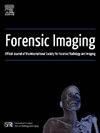评估膝关节骨化时间:开发和验证使用医学影像进行年龄估计的顺序评分方案
IF 1
Q4 RADIOLOGY, NUCLEAR MEDICINE & MEDICAL IMAGING
引用次数: 0
摘要
目的:采用现代可靠的评估方案,利用骨骺和形态学特征评估骨骼成熟度,对于人类识别工作和儿科生长监测至关重要。本研究旨在通过对澳大利亚和新墨西哥儿童的死后计算机断层扫描(PMCT)和磁共振成像(MRI)来开发和验证膝关节骨骼发育的评分系统。材料,方法对30例8 ~ 22岁的亚成人患者进行PMCT和30例t2加权MRI扫描,建立骨性膝关节的扫描方案。来自布里斯班儿童医院的DICOM图像堆栈和新墨西哥已故图像数据库(NMDID)进行了多平面重建和解剖对齐。该方案包括在4个骨骺融合和7个成熟度指标部位进行3到6个阶段的评分过程。三名不同经验水平的观察员在三天内评估了这些图像,并使用类内相关系数(ICC)对可靠性进行了量化。结果该方案具有较高的可靠性和一致性,CT (ICC = 0.985 (95% CI: 0.93-1.00))和MRI (ICC = 0.979 (95% CI: 0.85-1.00))的观察者内一致性很好。CT (ICC = 0.886 (95% CI: 0.75-0.95))和MRI (ICC = 0.852 (95% CI: 0.68-0.95))的平均观察者间信度测量良好。胫骨结节表现出最大的可变性,长骨骨骺愈合最少。结论:本研究提出了一种高度可重复的方法来评估亚成人膝关节骨骼发育,与现代成像标准一致。该方法将在法医人体鉴定、年龄确认和临床生长评估中得到应用本文章由计算机程序翻译,如有差异,请以英文原文为准。

Assessment of knee ossification timings: Development and validation of an ordinal scoring protocol for age estimation using medical imaging
Objectives
Assessing skeletal maturity using epiphyseal and morphological features with modern, reliable evaluation protocols is crucial for human identification efforts and paediatric growth monitoring. This study aims to develop and validate a scoring system for knee skeletal development on post-mortem computed tomography (PMCT) and magnetic resonance imaging (MRI) acquired from Australian and New Mexican children.
Materials & Methods
A protocol for the skeletal knee was developed on 30 PMCT and 30 T2-weighted MRI scans of subadults aged eight- to- 22 years. DICOM image stacks from a Brisbane children’s hospital and the New Mexico Decedent Image Database (NMDID) underwent multiplanar reconstruction and anatomical alignment. The protocol comprised a three- to- six stage scoring process at four epiphyseal fusion and seven maturity indicator sites. Three observers of varying experience levels assessed the images across three days, with reliability quantified using an intraclass correlation coefficient (ICC).
Results
The protocol demonstrated high reliability and consistency, with excellent intraobserver agreement for CT (ICC = 0.985 (95 % CI: 0.93-1.00)) and MRI (ICC = 0.979 (95 % CI: 0.85-1.00)). Mean inter-observer reliability measures were good for CT (ICC = 0.886 (95 % CI: 0.75-0.95)) and MRI (ICC = 0.852 (95 % CI: 0.68-0.95)). The tibial tubercle demonstrated the most variability and long-bone epiphyseal union the least
Conclusions
This research presents a highly reproducible method for assessing skeletal development of the knee in subadults, aligned with modern imaging standards. The methodology will have application in forensic human identification, age confirmation and clinical growth assessment
求助全文
通过发布文献求助,成功后即可免费获取论文全文。
去求助
来源期刊

Forensic Imaging
RADIOLOGY, NUCLEAR MEDICINE & MEDICAL IMAGING-
CiteScore
2.20
自引率
27.30%
发文量
39
 求助内容:
求助内容: 应助结果提醒方式:
应助结果提醒方式:


